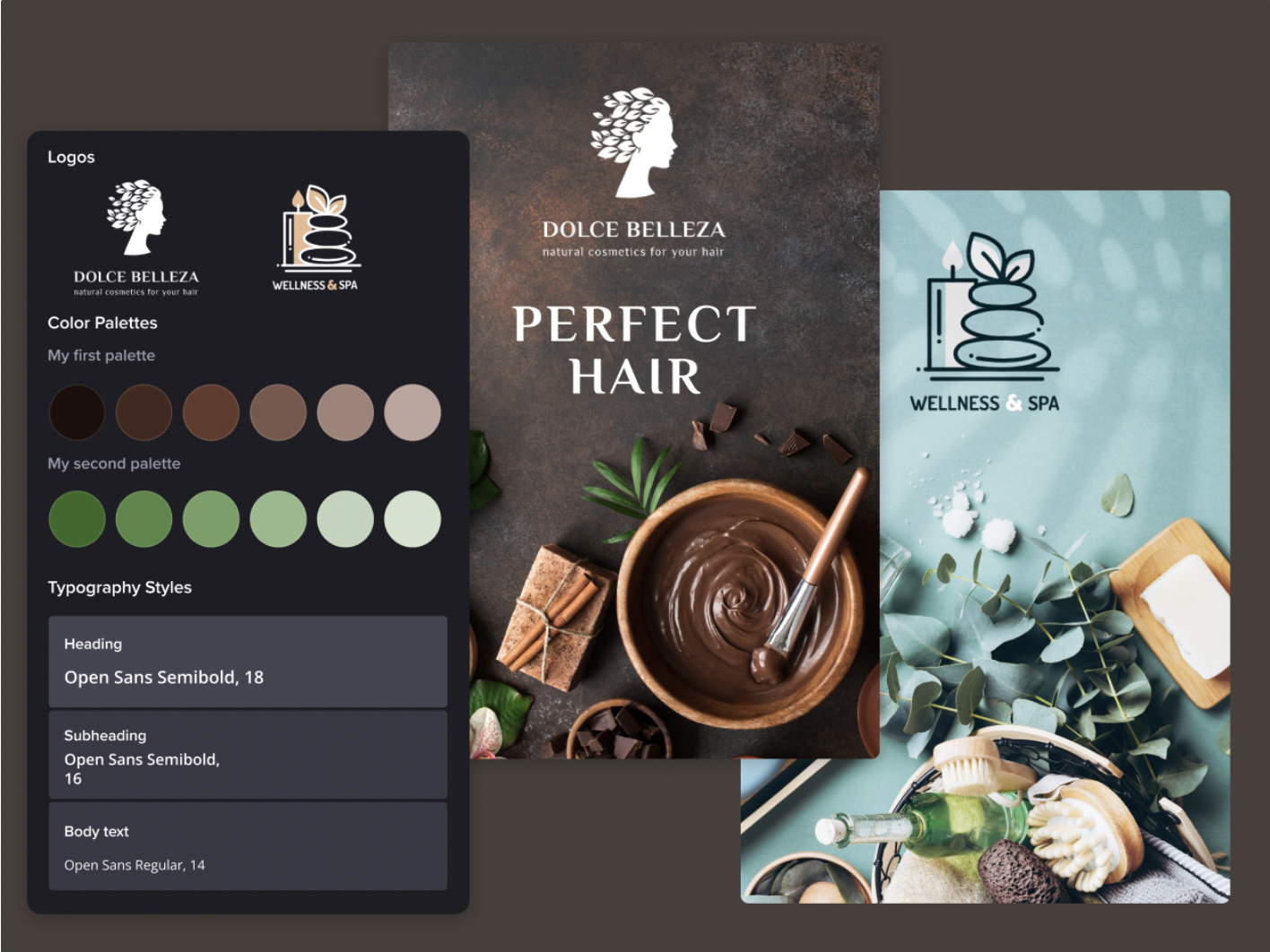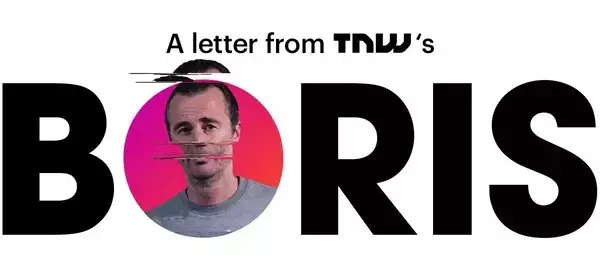You put your blood, sweat, and tears into building an amazing product that’ll solve your customers’ problems and blow the competition away. The problem is: no one knows about it.
Sound familiar?
You can spend all the time you want on product development, but without a well-defined brand, you’ll struggle to catch the eye of customers and investors, or stand out against competitors.
The question is, where do you start? You need more than a business card to get started in the big wide business world. Think: a logo, website, and popping social media presence.
Are you panicking because you don’t have a full time designer yet? Not to worry. Marketing platforms, design tools, and online tutorials have made it easier for startups to build an attractive brand with low or absolutely no budget.
We spoke with two experts at Vista Create, an easy-to-use graphic design platform for startups and SMEs, about how businesses can create their own branding, even if they don’t have a designer on the team.
Sleuth your way to success
Before you start comparing Pantone colors (can anyone actually see the difference between peacock and ocean blue?), you need to find a benchmark. What are your competitors doing? How about your customers? What’s your market’s unique approach to branding?
Sandra Iakovleva, Head of Content at VistaCreate, recommends doing a deep dive into your competitors’ internet behavior.
“Pay attention to the way they talk about their product or service, how they look, and how people talk about the brand,” Iakovleva says. “Then note where they get the most engagement, so you can replicate some of that success.”
It’s also important to decide which social media platforms you need a presence on, before you start designing. Iakovleva has a word of advice for figuring that out:
Find out where your target audience hangs out online, how they consume their content, and how you can best reach them. Most importantly, know what you’ll be doing differently from your competitors to attract that audience.
Figure out your brand DNA
Your brand DNA doesn’t require a swab, but it does require that you get a little granular about the essence of your business identity. Oksana Tunikova, Brand Manager at VistaCreate, has a simple framework for figuring this out:
You need to define the following elements: vision (what you aspire to achieve), mission: (what you exist to do every day), positioning: (how you’re different from all the rest), personality: (what emotions your brand evokes and what language it speaks), and values (what you believe). This is what helps build emotional connection with your audience.
Your brand has to be clear and recognizable, not just to your audience, but to the sales team building decks, developers creating your website, and the many interns who will also be creating assets for your team. Tunikova suggests creating a brand book to ensure, no matter who’s creating content, it’ll always maintain the same brand essence.
“It doesn’t have to be 100 pages long,” Tunikova assures. “In some cases, a 10 page PDF will do the job. Just make sure it clearly defines guidelines on visual communication (brand color palette, versions of the logo, brand fonts), and verbal communication (tone of voice). Once you have these rules outlined – stick to them.”


This is echoed by Iakovleva, who points out that building a brand kit to share externally is another important step.
Be sure to include your messaging (positioning statement, values, tagline, etc), brand attributes (characteristics that define who you are), all the versions of your logo (includes guidelines on how not to misuse it), the color profile of your brand, typography used across channels, and any other visual attributes that define the look, feel, and general visual brand identity.
Design your logo
One of the easiest ways to make sure you stay true to your brand DNA with a low or no budget is to stick with the brand kit basics: your logo, colors, and fonts.
The logo is undoubtedly the hardest thing to create. Logos have to look great on your website, as a teeny tiny favicon and blown up on a billboard. They need to work in color, and black and white.
There are plenty of free design tools out there that can help you craft a cracking logo, and select the colors and fonts that best reflect your brand identity. And if you do manage to tackle those tasks yourself, it leaves a bit more room in the kitty for bigger design projects (like your website).
<iframe title="VistaCreate Logomaker" width="500" height="375" srcdoc="*{padding:0;margin:0;overflow:hidden}html,body{background:#000;height:100%}img{position:absolute;top:0;left:0;width:100%;height:100%;object-fit:cover;transition:opacity .1s cubic-bezier(0.4,0,1,1)}a:hover img+img{opacity:1!important}

 ” frameborder=”0″ allow=”accelerometer; autoplay; clipboard-write; encrypted-media; gyroscope; picture-in-picture” allowfullscreen>[embedded content]
” frameborder=”0″ allow=”accelerometer; autoplay; clipboard-write; encrypted-media; gyroscope; picture-in-picture” allowfullscreen>[embedded content]
“Your basics can be done on your own, for sure,” Iakovleva comments. “Many people take it too far with logos; they overcomplicate things with too many design elements. “You’ll notice the most recognizable logos are often the most simple. The focus is on a standout visual element or a unique font that’s super easy to read.”
If you get stuck while creating your logo or any other design asset, Tunikova suggests letting your brand story guide your design decisions.
Whether it’s real or made up, a good story helps people remember brands and build a strong emotional connection to them. This could be a real personal story of a founder, explaining the source of their idea. Or a well-crafted legend telling about the origins of the product or service.
Aim for timeless, not trendy
Think carefully about using trends in your startup branding. Just because Ryanair posted a sweet rendition of the corn song on TikTok, doesn’t mean you should too.
Using a trending audio or filter on social can help you reach new audiences, but it shouldn’t substitute building a unique social media presence.
According to Iakovleva:
Trends have to be balanced with well-thought-out design decisions. You want something that will last, and for that reason, it’s more important to make design decisions based on the unique aspects of your brand, your values, and the message you want to communicate.
Of course, consistently publishing content that aligns with your brand is a full-time job in itself. You can make that job easier with a decent design tool.
“Tweaking designs is easier than creating them from scratch,” Iakovleva tells me. “And using ready-made templates means you always have something to fall back on if you’re not sure what to post on social media.”
Some websites also offer handy online tutorials as well as design features, so you can learn as you go. And if design isn’t in your wheelhouse, there are online communities jam packed with talented designers who can help you.
Be patient, but proactive
Unstoppable brands don’t materialize overnight.
As Oksana points out, “developing a brand is something that takes time. It doesn’t just depend on your effort, but also the response of your audience. That’s why we often hear that a brand is not what the company says it is, but rather what the customers think it is. It’s all about perception.”
The good news is, you can influence that perception. By mastering the basic elements of a brand book/kit, and using those as a starting point for all other assets, you can build a consistent, memorable, and authentic brand.

